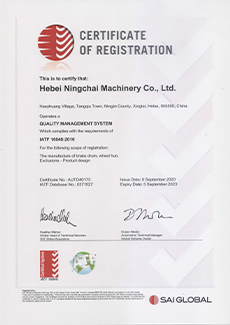
-
 Afrikaans
Afrikaans -
 Albanian
Albanian -
 Amharic
Amharic -
 Arabic
Arabic -
 Armenian
Armenian -
 Azerbaijani
Azerbaijani -
 Basque
Basque -
 Belarusian
Belarusian -
 Bengali
Bengali -
 Bosnian
Bosnian -
 Bulgarian
Bulgarian -
 Catalan
Catalan -
 Cebuano
Cebuano -
 Corsican
Corsican -
 Croatian
Croatian -
 Czech
Czech -
 Danish
Danish -
 Dutch
Dutch -
 English
English -
 Esperanto
Esperanto -
 Estonian
Estonian -
 Finnish
Finnish -
 French
French -
 Frisian
Frisian -
 Galician
Galician -
 Georgian
Georgian -
 German
German -
 Greek
Greek -
 Gujarati
Gujarati -
 Haitian Creole
Haitian Creole -
 hausa
hausa -
 hawaiian
hawaiian -
 Hebrew
Hebrew -
 Hindi
Hindi -
 Miao
Miao -
 Hungarian
Hungarian -
 Icelandic
Icelandic -
 igbo
igbo -
 Indonesian
Indonesian -
 irish
irish -
 Italian
Italian -
 Japanese
Japanese -
 Javanese
Javanese -
 Kannada
Kannada -
 kazakh
kazakh -
 Khmer
Khmer -
 Rwandese
Rwandese -
 Korean
Korean -
 Kurdish
Kurdish -
 Kyrgyz
Kyrgyz -
 Lao
Lao -
 Latin
Latin -
 Latvian
Latvian -
 Lithuanian
Lithuanian -
 Luxembourgish
Luxembourgish -
 Macedonian
Macedonian -
 Malgashi
Malgashi -
 Malay
Malay -
 Malayalam
Malayalam -
 Maltese
Maltese -
 Maori
Maori -
 Marathi
Marathi -
 Mongolian
Mongolian -
 Myanmar
Myanmar -
 Nepali
Nepali -
 Norwegian
Norwegian -
 Norwegian
Norwegian -
 Occitan
Occitan -
 Pashto
Pashto -
 Persian
Persian -
 Polish
Polish -
 Portuguese
Portuguese -
 Punjabi
Punjabi -
 Romanian
Romanian -
 Russian
Russian -
 Samoan
Samoan -
 Scottish Gaelic
Scottish Gaelic -
 Serbian
Serbian -
 Sesotho
Sesotho -
 Shona
Shona -
 Sindhi
Sindhi -
 Sinhala
Sinhala -
 Slovak
Slovak -
 Slovenian
Slovenian -
 Somali
Somali -
 Spanish
Spanish -
 Sundanese
Sundanese -
 Swahili
Swahili -
 Swedish
Swedish -
 Tagalog
Tagalog -
 Tajik
Tajik -
 Tamil
Tamil -
 Tatar
Tatar -
 Telugu
Telugu -
 Thai
Thai -
 Turkish
Turkish -
 Turkmen
Turkmen -
 Ukrainian
Ukrainian -
 Urdu
Urdu -
 Uighur
Uighur -
 Uzbek
Uzbek -
 Vietnamese
Vietnamese -
 Welsh
Welsh -
 Bantu
Bantu -
 Yiddish
Yiddish -
 Yoruba
Yoruba -
 Zulu
Zulu
includes drum and disc brakes
Understanding Drum and Disc Brakes A Comprehensive Overview
Braking systems are crucial components of any motor vehicle, responsible for slowing down or stopping the vehicle safely and efficiently. Among the various braking systems in use today, drum brakes and disc brakes are the two predominant types. Each has its own unique design, functionality, advantages, and disadvantages, catering to different types of vehicles and driving conditions.
Drum Brakes Design and Functionality
Drum brakes consist of a cylindrical drum that rotates along with the wheel. Inside the drum, brake shoes are positioned to press against the inner surface of the drum when the brakes are applied. The force from the brake pedal actuates a wheel cylinder, pushing the brake shoes outward against the drum to create friction and slow down the vehicle.
One of the primary advantages of drum brakes is their ability to generate a significant amount of stopping power and their effective heat dissipation, which can be beneficial during prolonged braking situations. Additionally, drum brakes are typically lighter and less expensive to manufacture than their disc counterparts, making them a common choice for the rear wheels of cost-effective vehicles.
However, drum brakes do come with some drawbacks. They are more prone to heat-related issues due to their enclosed design, resulting in brake fade during intense usage. Additionally, they tend to be less efficient than disc brakes in terms of moisture resistance, as water can accumulate inside the drum, reducing braking performance in adverse weather conditions.
Disc Brakes Design and Functionality
includes drum and disc brakes

Disc brakes, on the other hand, consist of a flat disc that rotates with the wheel, alongside calipers that house brake pads. When the brake pedal is pressed, hydraulic pressure forces the caliper to close the pads against the disc, producing friction that slows down the wheel.
The superiority of disc brakes lies in their overall performance, particularly in dissipating heat. The exposed design allows for superior cooling and less chance of brake fade, making them ideal for high-performance vehicles and driving conditions that demand quick stopping power. Additionally, disc brakes are less susceptible to problems associated with moisture, leading to more consistent braking performance in wet environments.
Despite their many advantages, disc brakes come with some disadvantages. They are generally more expensive to manufacture and can be heavier than drum brakes. Moreover, the maintenance of disc brakes can be more demanding, as the pads wear out quicker and may require more frequent replacement compared to drum brakes.
Conclusion The Right Choice for Your Vehicle
Choosing between drum and disc brakes often depends on the specific requirements of the vehicle and the driving conditions it will encounter. While drum brakes are frequently found on the rear wheels of many economy cars due to their lower cost, most modern vehicles, especially performance cars and those designed for heavy-duty use, are equipped with disc brakes on all wheels for superior braking performance.
In conclusion, understanding the differences between drum and disc brakes can help vehicle owners make informed decisions about maintenance, upgrades, or purchasing new vehicles. Whether you opt for the cost-effective nature of drum brakes or the reliable performance of disc brakes, the key is to ensure that your braking system is kept in optimal condition for safety on the road.
-
What Are Drum BrakesNewsJul.07,2025
-
Understanding Brake Drum MaterialNewsJul.07,2025
-
Semi-Trailer Brake Drum: A Key Component for Extreme Loads and Long-Distance TransportNewsJul.07,2025
-
Drum Brake Pads for SaleNewsJul.07,2025
-
Brake Drums for SaleNewsJul.07,2025
-
Brake Drum ManufacturerNewsJul.07,2025
-
Aluminum Brake Drums: The Future of High-Performance CarsNewsJul.07,2025
